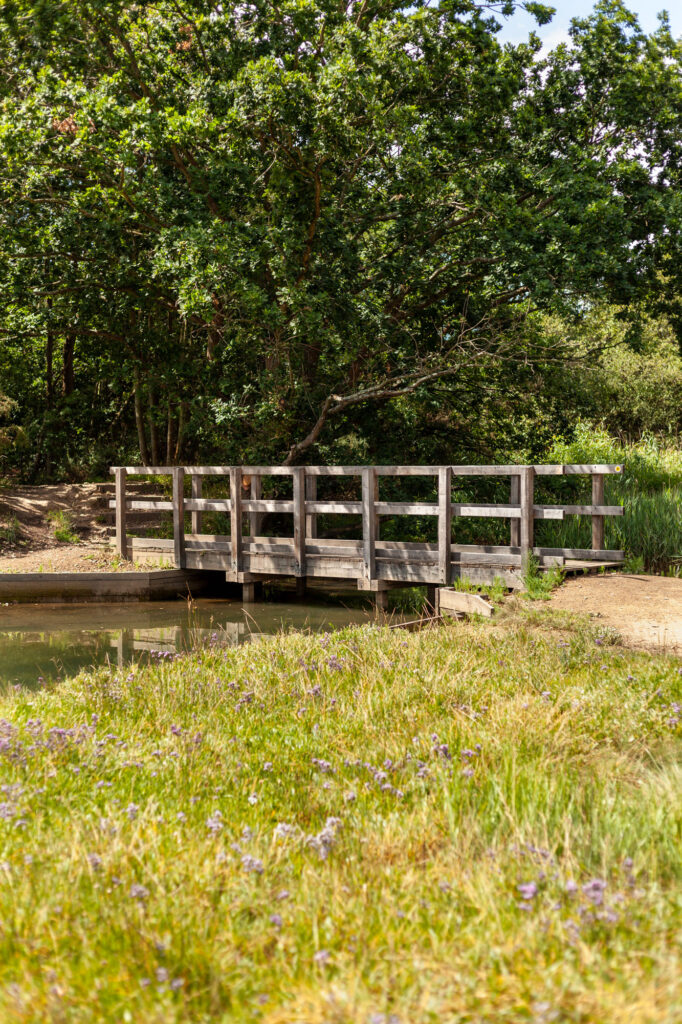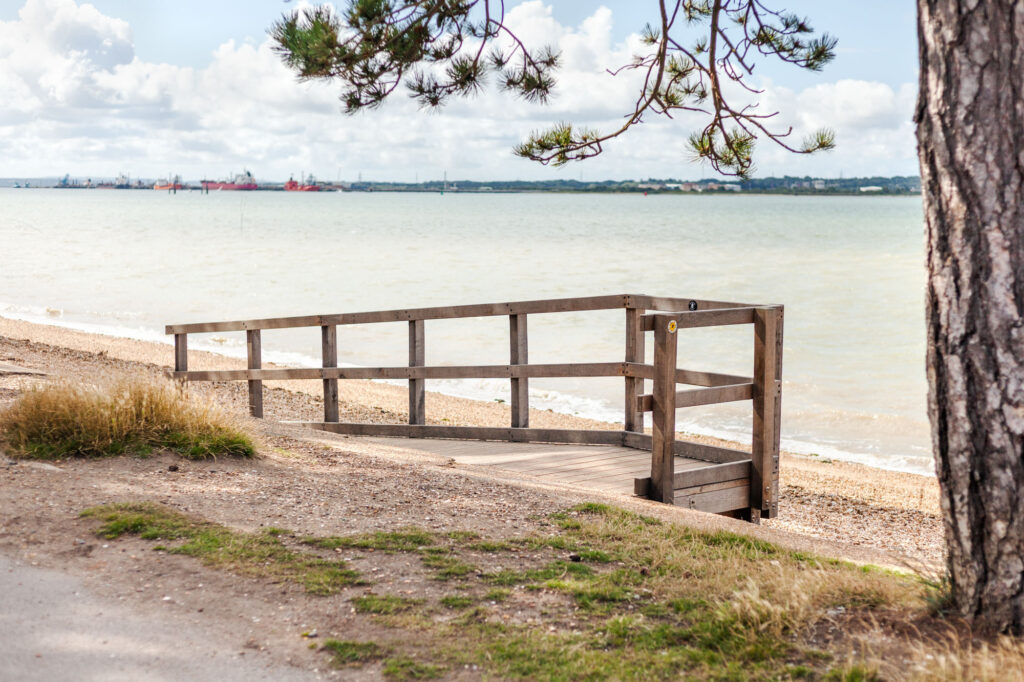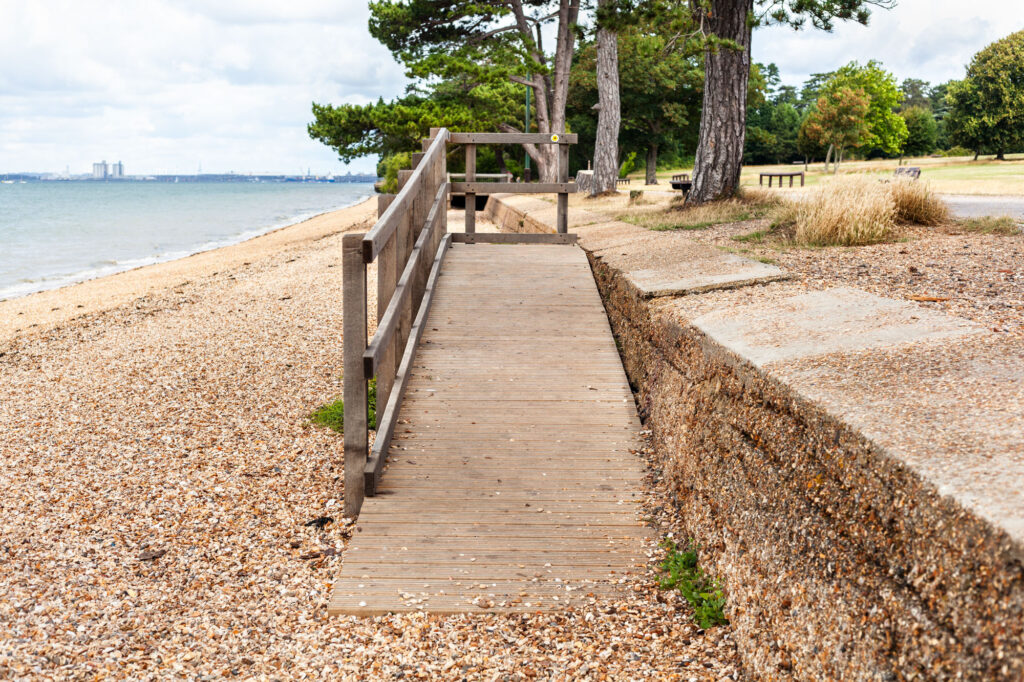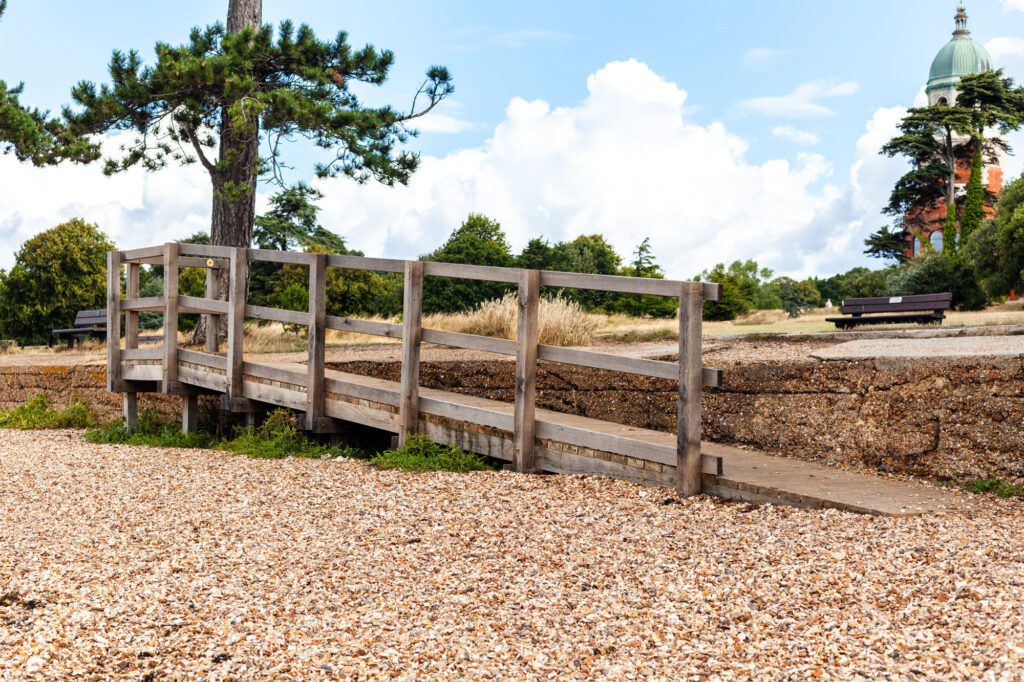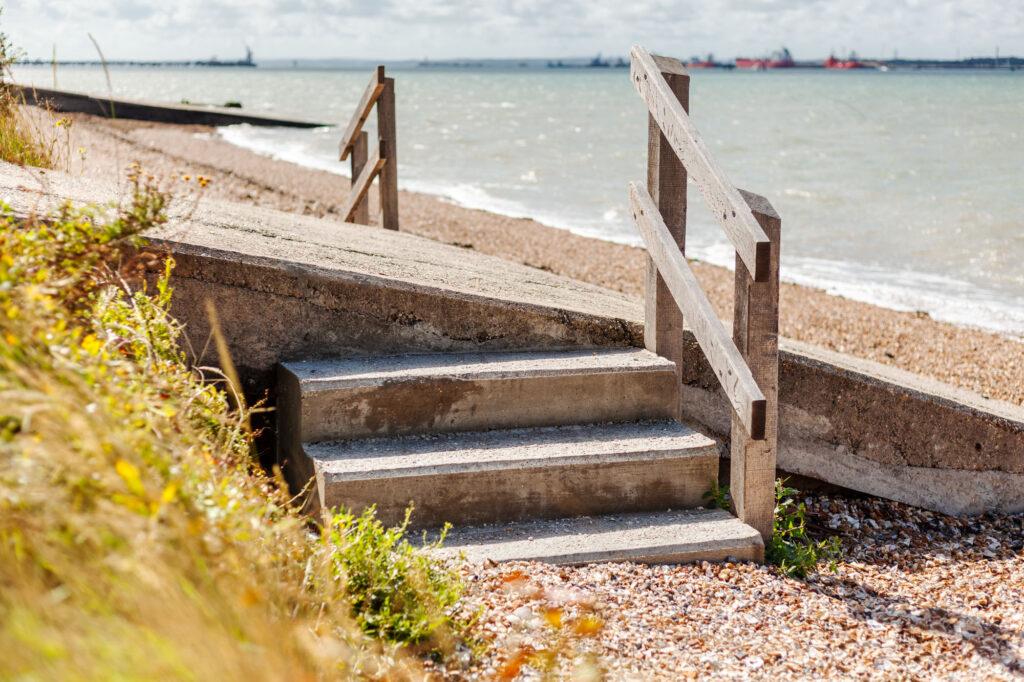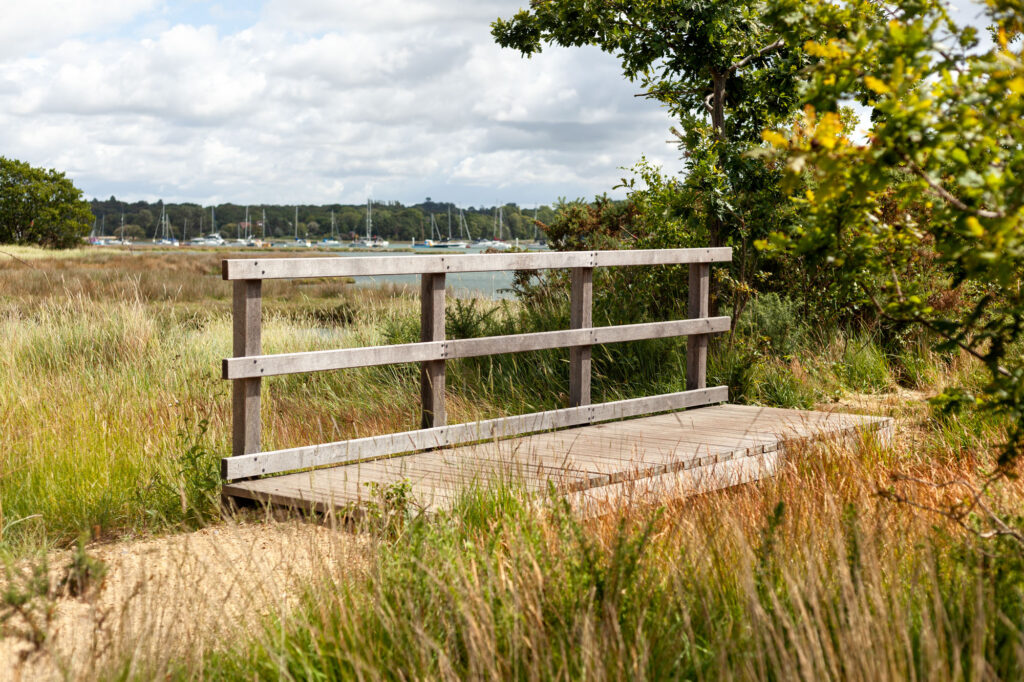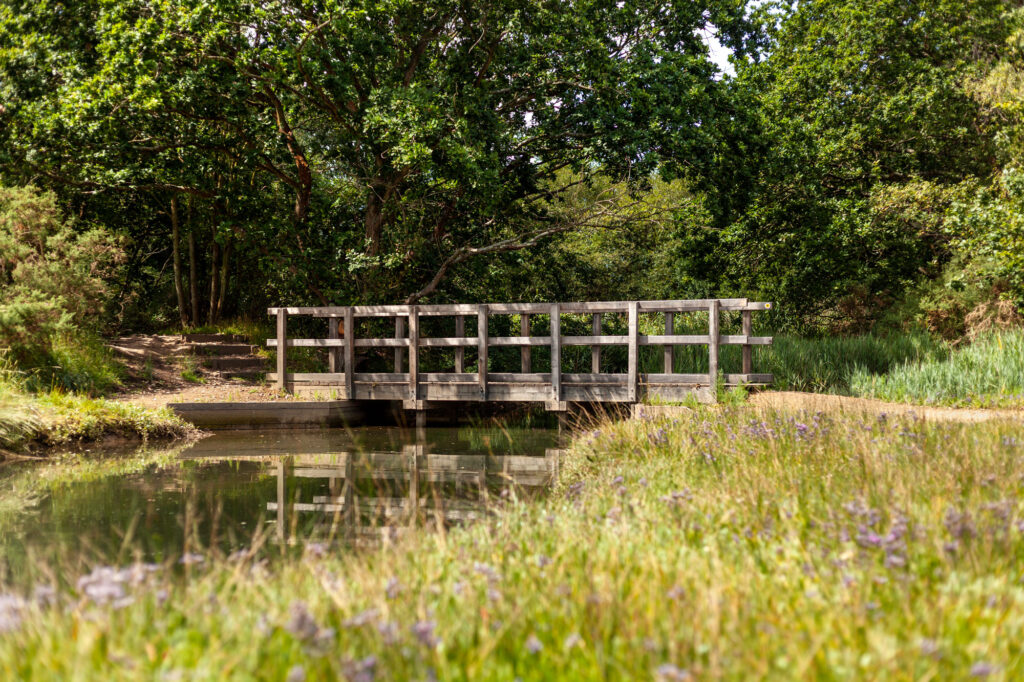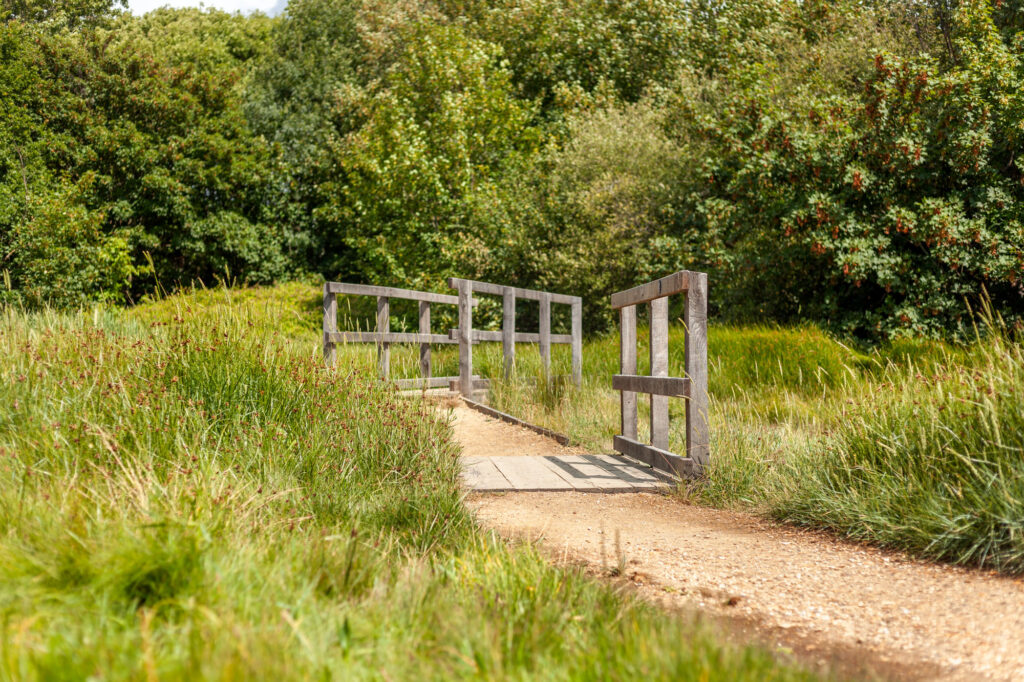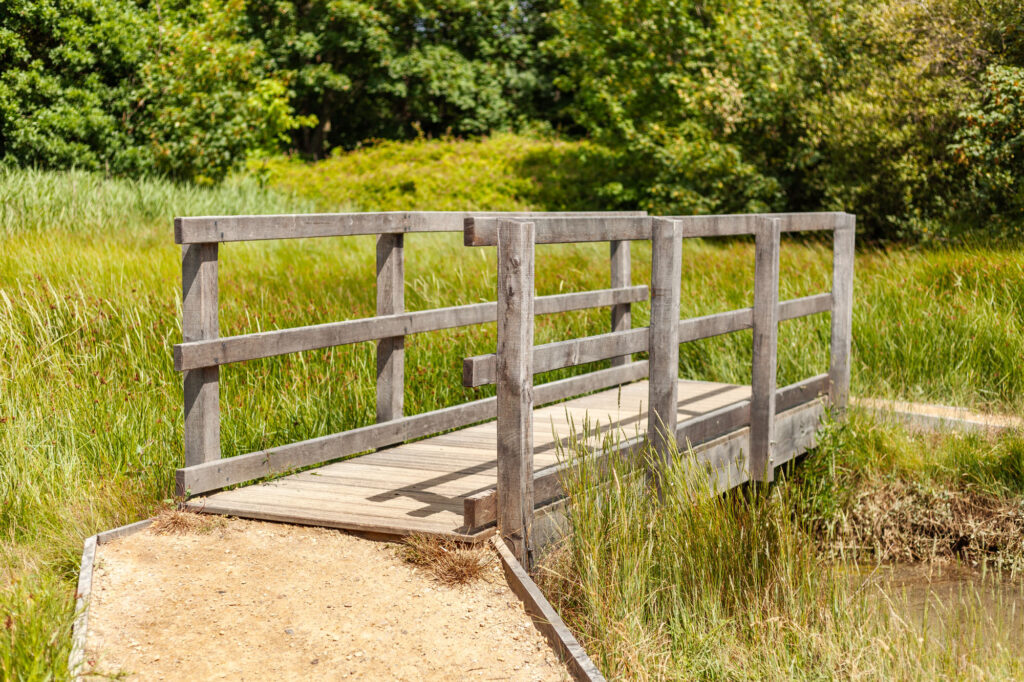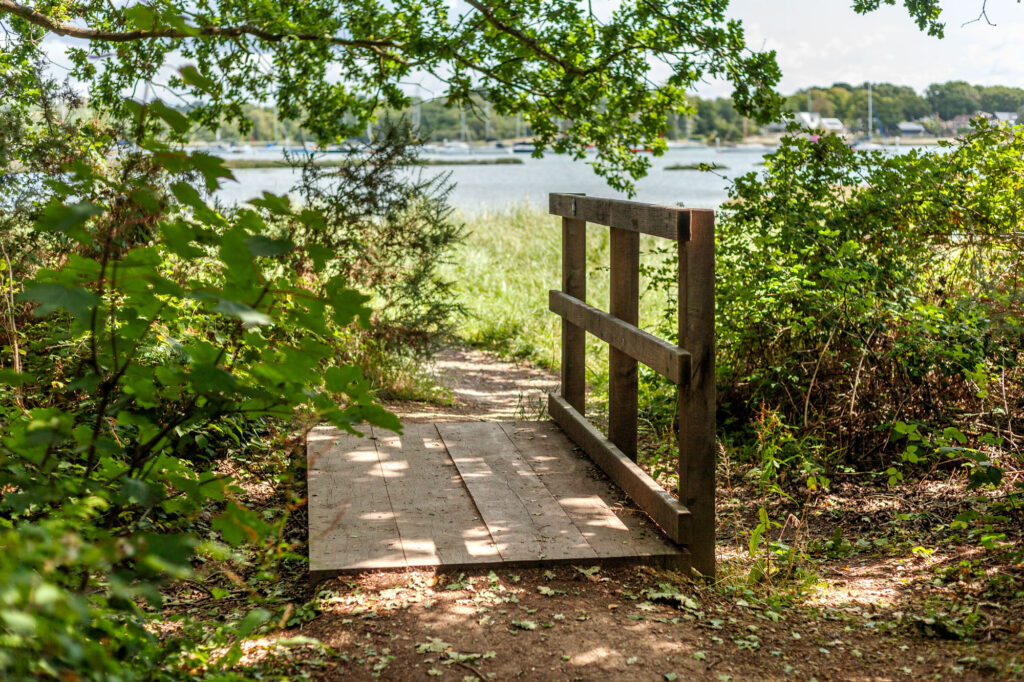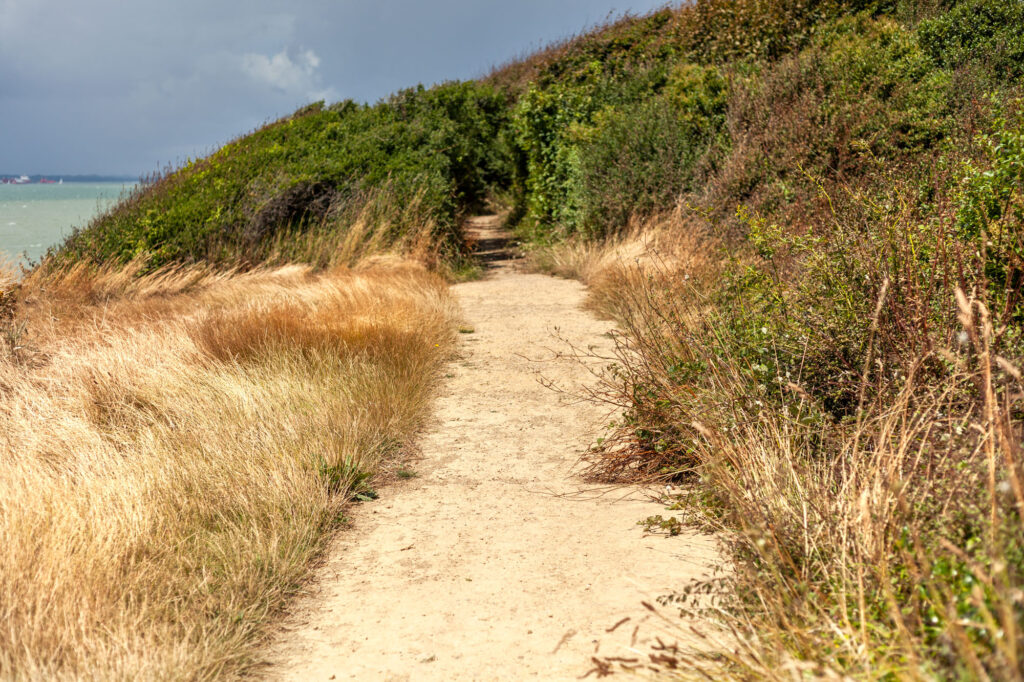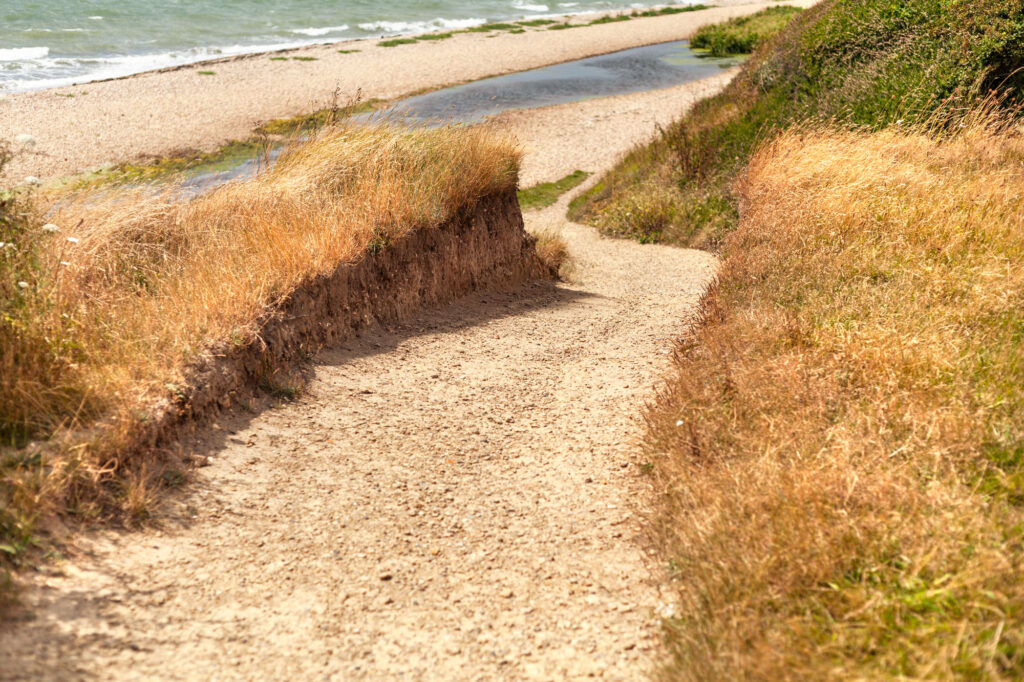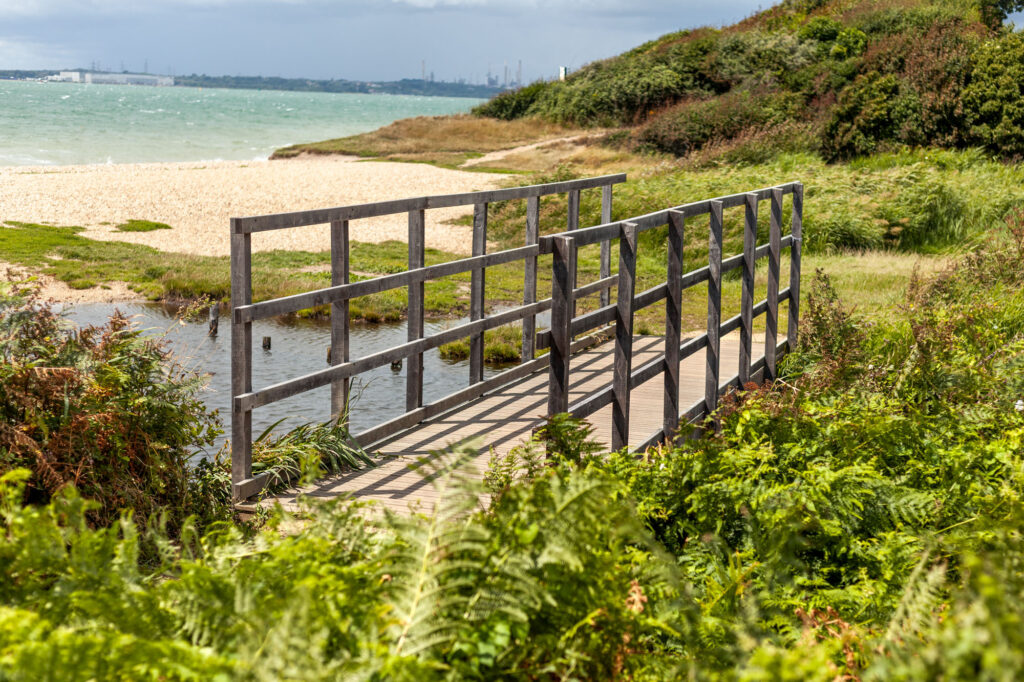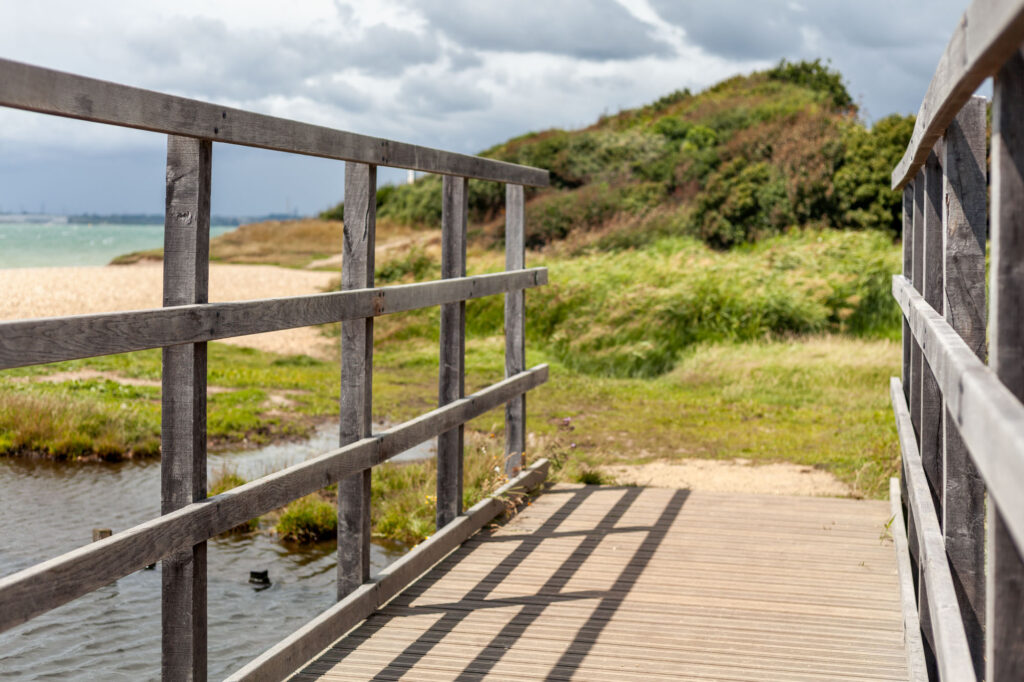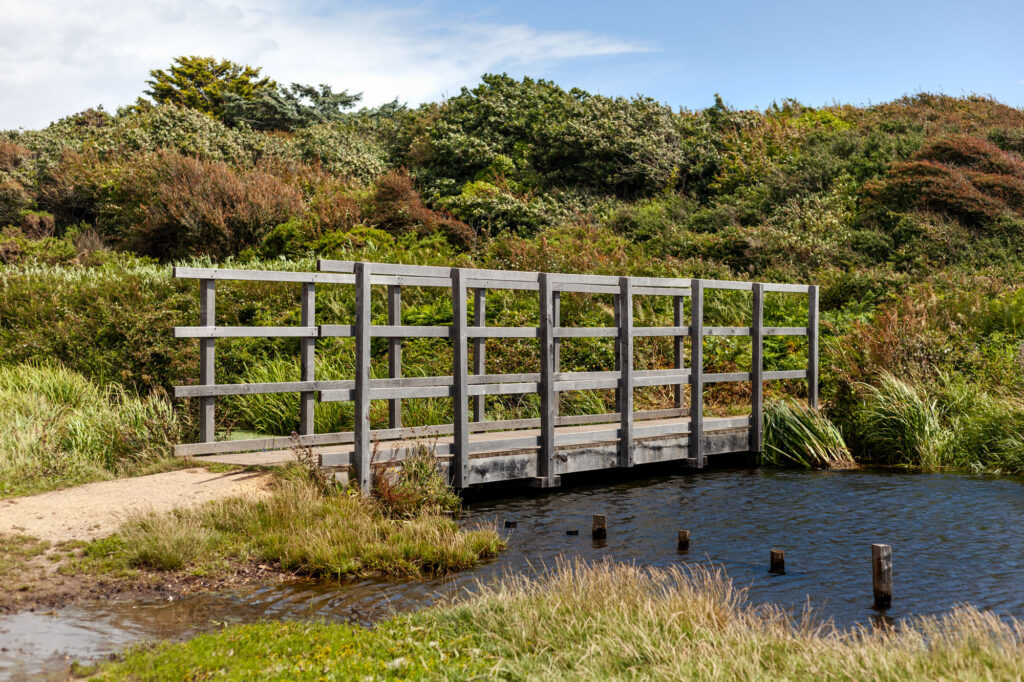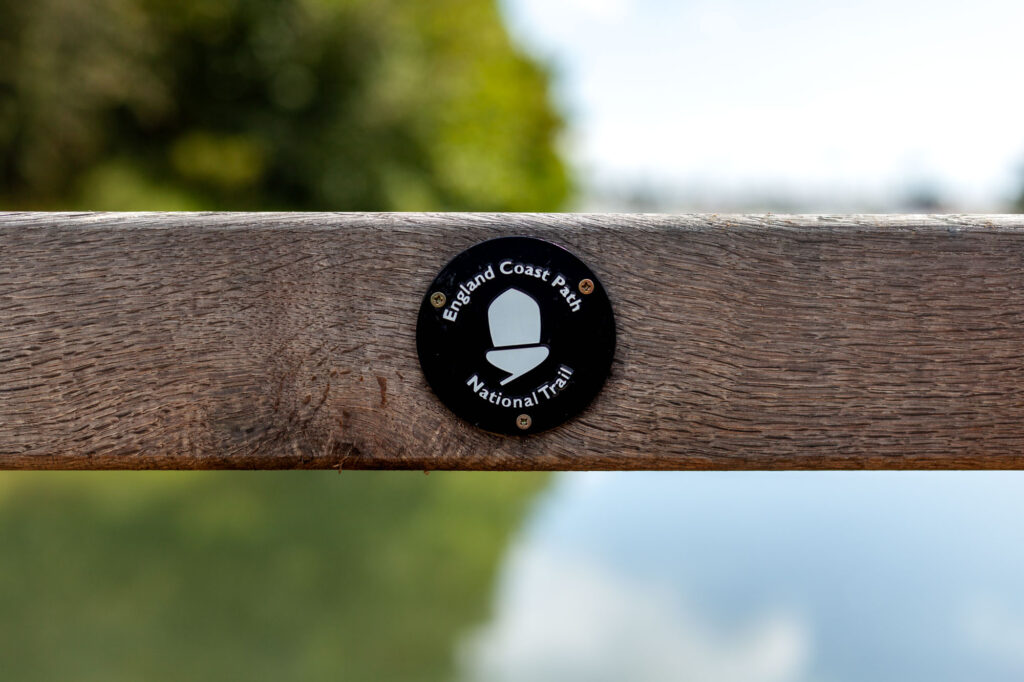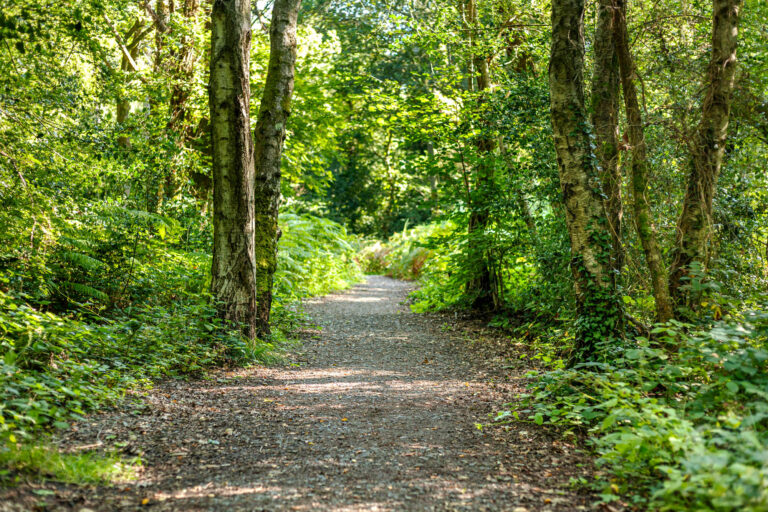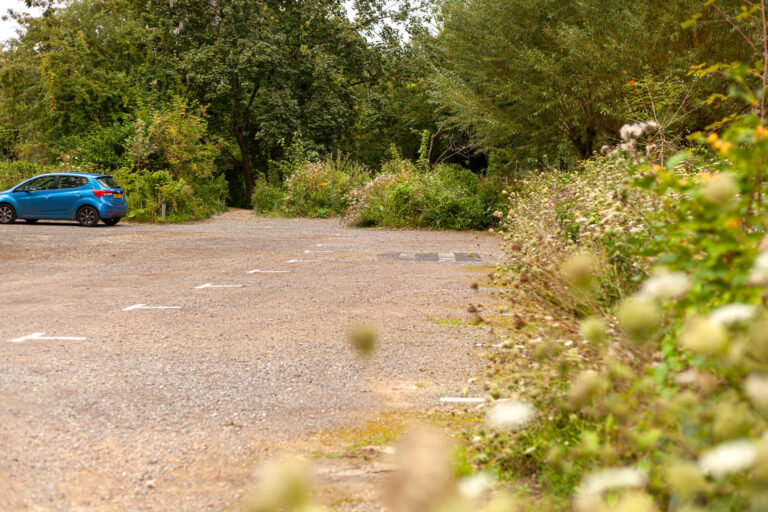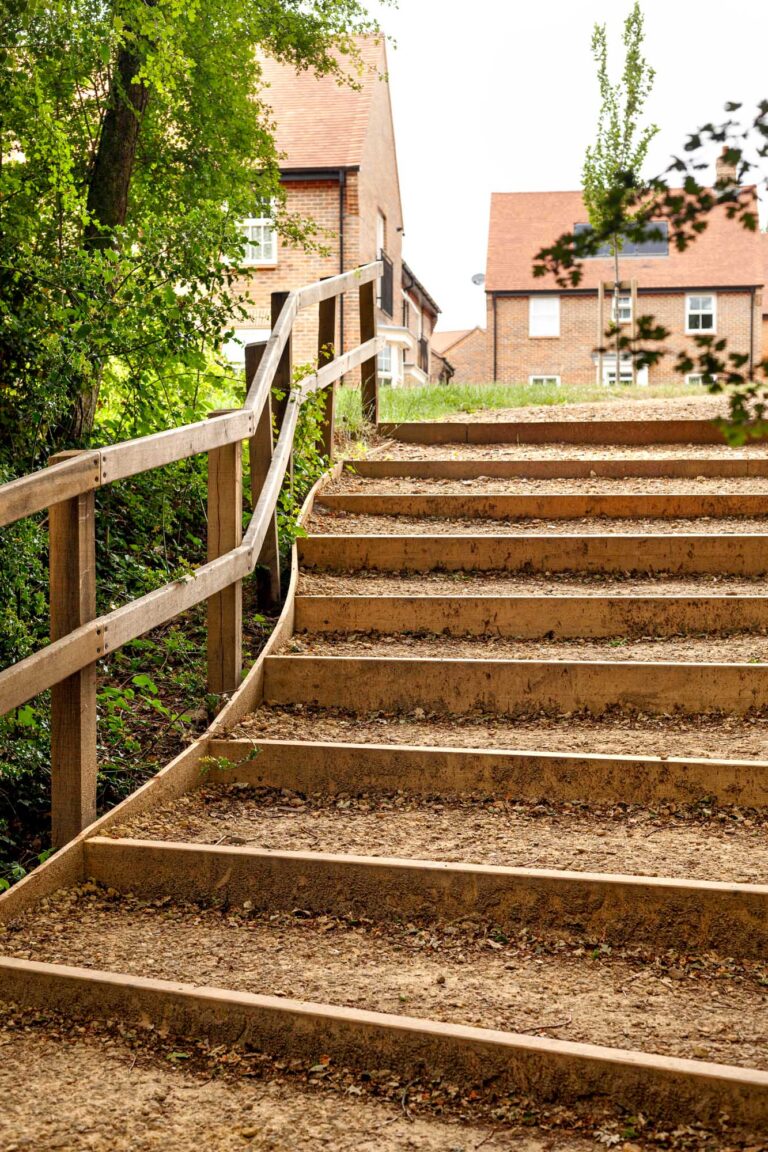At the time of this project, the England Coast Path was being created as a new national trail following the length of the English coastline. On behalf of Hampshire County Council (HCC), Aquascience worked to establish this route along the Calshot to Gosport stretch.
At Royal Victoria Country Park (RVCP), the route required a ramp down to the beach and steps to cross two slipways. An existing set of concrete steps was removed, and the new ramp was built from green and air-dried oak and finished with oak anti-slip Gripdeck. All fixings are marine-grade and this, along with using oak, ensures longevity in this harsh coastal location, weathered by wind, water, and salinity. The steps were made from 40N-strength concrete. This will, again, add to the integrity and longevity of the newly cast structures when compared to standard concrete.
Hamble Point required both the replacement and the addition of two bridges and four ditch crossings. These structures were made entirely of oak, with some using oak sleepers and some using oak anti-slip Gripdeck underfoot. Like at RVCP, the fixings are marine grade.
To allow for increased access, large mobility kissing gates were installed in place of smaller gates. Scrub clearance was carried out and pathing improvements were made to both sites, further improving accessibility through the routes.
At Meon Shore, extensive vegetation clearance was carried out to widen the path. The path tray was lined with a non-woven geotextile and pathing material was added, compacted and cambered. Small sections of post and rail fencing were installed along the side of the path to discourage access to the beach down unsafe and eroding gullies.
A pathing stone ramp was created in a section of the route where the gradient became steep. The public had been using a slim, eroding slope to navigate the terrain and, therefore, a safer and more formal ramp was required. An existing bridge further down the route was removed, and a bridge made from oak and marine-grade fixings was installed to replace it. The bridge required the acquisition of a FRAP and was constructed with bridleway specification handrails and loading capacity.
The project has effectively made this section of the England Coast Path more user-friendly, helping to establish the new national trail.

